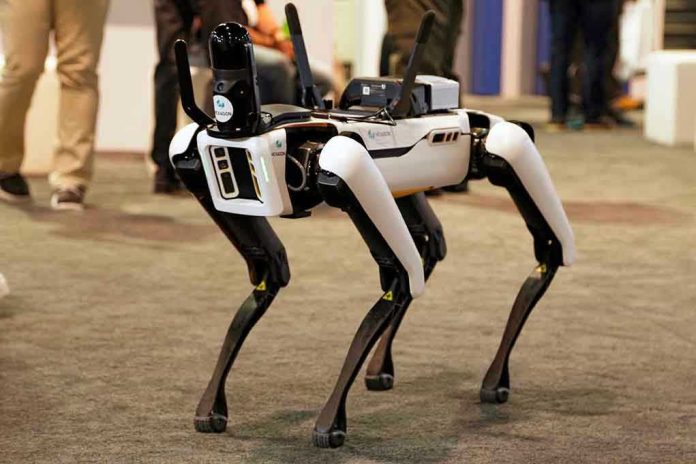
China’s showcase of humanoid robots challenges global leadership in AI, raising concerns about technological dominance.
Story Snapshot
- First global humanoid robot games held in Beijing.
- Over 500 robots from 280 teams participated.
- Robots performed sports, dance, and music alongside humans.
- China uses event to demonstrate AI leadership.
World Humanoid Robot Games: A Technological Showcase
The first-ever World Humanoid Robot Games commenced in Beijing on August 14, 2025, marking a significant milestone in robotics and artificial intelligence. With over 500 robots from 280 teams across more than 16 countries, the event highlighted the integration of humanoid robots in various entertainment and competitive formats. Participants showcased their innovations in events ranging from soccer and martial arts to musical and fashion performances. The opening ceremony was a spectacle of technology and talent, featuring robots alongside human performers in a blend of cultures and capabilities.
China, as the host nation, utilized this event to underscore its growing influence in the field of robotics and AI. The games serve as a platform for China to assert its technological prowess, attracting global attention and fostering international collaboration. The country’s substantial investment in AI and automation has positioned it as a leader, with the games being a testament to these efforts. This event not only showcases China’s advancements but also serves as a strategic move to enhance its soft power through technology-driven diplomacy.
Challenges and Technical Hurdles
Despite the impressive demonstrations, the event was not without its challenges. Some robots encountered technical difficulties, such as stability issues and failures during performances. These incidents brought to light the ongoing challenges in the field of robotics, emphasizing the need for continued research and development. Experts view these challenges as part of the learning curve, acknowledging the significant progress made while recognizing the gap between demonstration capabilities and real-world applications.
The games have sparked discussions among robotics enthusiasts and skeptics alike. While optimists see the potential for rapid advancements and future applications, skeptics point to the existing limitations and the need for further innovation to achieve practical utility. These diverse perspectives contribute to a broader understanding of the current state and future potential of humanoid robotics on a global scale.
Broader Implications and Future Prospects
The World Humanoid Robot Games have far-reaching implications for various sectors. In the short term, they have generated significant public interest and media coverage, enhancing the visibility of robotics as both an entertainment medium and a technological showcase. Long-term effects include the acceleration of humanoid robot development and the exploration of new applications in industries such as entertainment, sports, and services. The event also highlights the potential for increased investment in the robotics sector, driven by both public interest and competitive innovation.
For the United States and other countries, the games underscore the importance of maintaining competitive edges in AI and robotics. The event serves as a reminder of the rapid technological advancements being made globally and the strategic importance of fostering innovation domestically. As countries vie for leadership in AI, events like these highlight the need for policies that support technological growth while safeguarding national interests.
Sources:
Beijing’s First World Humanoid Robot Games Opens with Street Dance and Martial Arts
Beijing’s First World Humanoid Robot Games Opens












